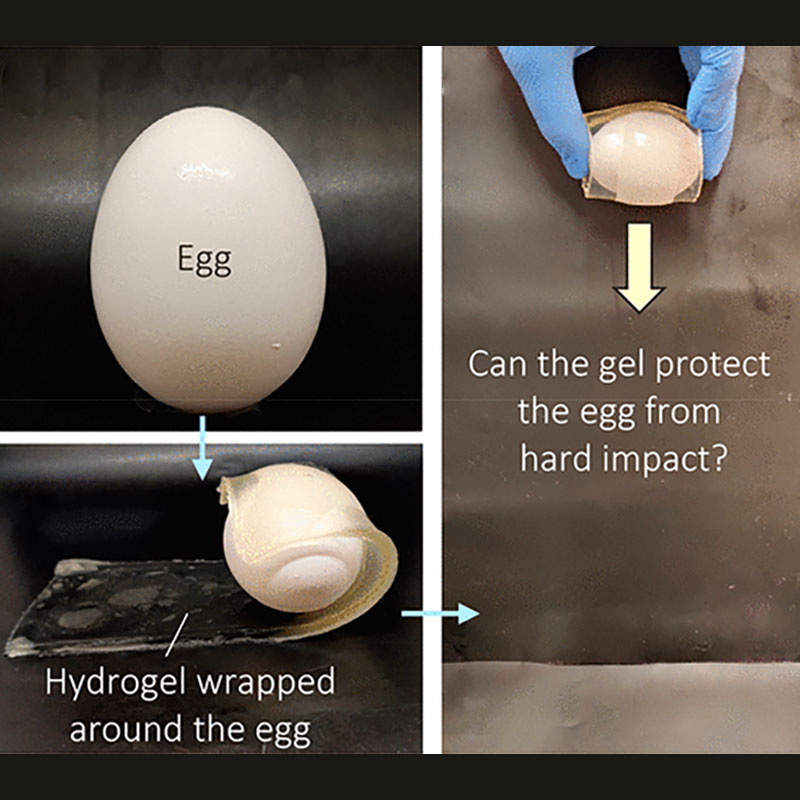Simple Household Ingredients Create Impact-Protective Super Gel
Members of the University of Maryland’s (UMD) Complex Fluids and Nanomaterials Group, led by Professor Srinivasa Raghavan, have used two simple household staples—corn starch and gelatin—to make a flexible gel that absorbs impact. Their work, published in ACS Applied Materials & Interfaces, a journal of the American Chemical Society (ACS), demonstrates how these gels can be wrapped around fragile objects like eggs and blueberries and protect them from violent impact. The paper is already generating interest in the scientific community—the ACS put out a press release on this work, which has featured on phys.org. While impact-absorbing materials,such as bubble wrap or packing peanuts, are commonplace, they can take up a lot of volume. The UMD team wondered if they could make a hydrogel that was a thin and flexible strip – and still absorb impact. Hydrogels (gels for short) are water-swollen materials formed by adding polymers to water and connecting the chains into a network. A classic example is the popular dessert treat Jello—a gel made from gelatin. But could a thin slice of Jello be sufficient for protecting fragile objects? The researchers realized that none of the conventional hydrogels did the trick. Thin gelatin gels were flexible enough, but they failed to protect fragile objects, butSairam Ganesh, lead author of the paper, had the intuition to try corn starch as an additive to gelatin. Why starch? Raghavan explained that such experiments are common practice in his group. “We have a culture in my lab of trying things with simple, everyday materials. Sairam had seen a video about corn starch in water that people could walk on, and we had starch in the lab from a previous study, so he decided to give it a try.” What Sairam discovered was that adding just a few percent of starch to the gelatin substantially improved its ability to absorb impact. And the more starch, the better this ability. Encouraged by the results, the researchers went on to optimize their material, ultimately discovering that gelatin gels with 10-20 percent starch had an ideal combination of flexibility and impact absorption. Next, it was time to put these gels to test in the real world, using eggs and blueberries as models for fragile objects. The researchers report in the paper that gel-swaddled eggs, dropped from a height of 40 cm (15 inches) onto a hard surface broke if the gel was simply gelatin. However, if the gel was infused with starch, the egg survived the fall and remained intact! They then experimented with dropping weights on blueberries sandwiched like ravioli between two layers of the gelatin-starch gel. The berries also survived. “A crucial question is why starch works the way it does,” noted Raghavan. “We have some intriguing hypotheses, but further studies are required. More broadly, we are interested in why some materials are better than others at absorbing impact – and how we can improve this ability.” A better understanding of impact-absorbing materials could pave the way for improved sports equipment and helmet designs, protecting soft or fragile goods in transit, or in better protective cases for sensitive electronics. Beyond human and product protection, the researchers also point out that hydrogels are akin to soft tissues in the body like cartilage or the discs in the spine. Gelatin, in fact, is derived from the protein collagen. Thus, this research may offer insight into how the tissues in our body have been biologically designed to provide the most protection. ACS video features nursery rhyme character Humpty Dumpty taking advantage of UMD’s new starch-gel innovation.
August 19, 2022 Prev Next |


